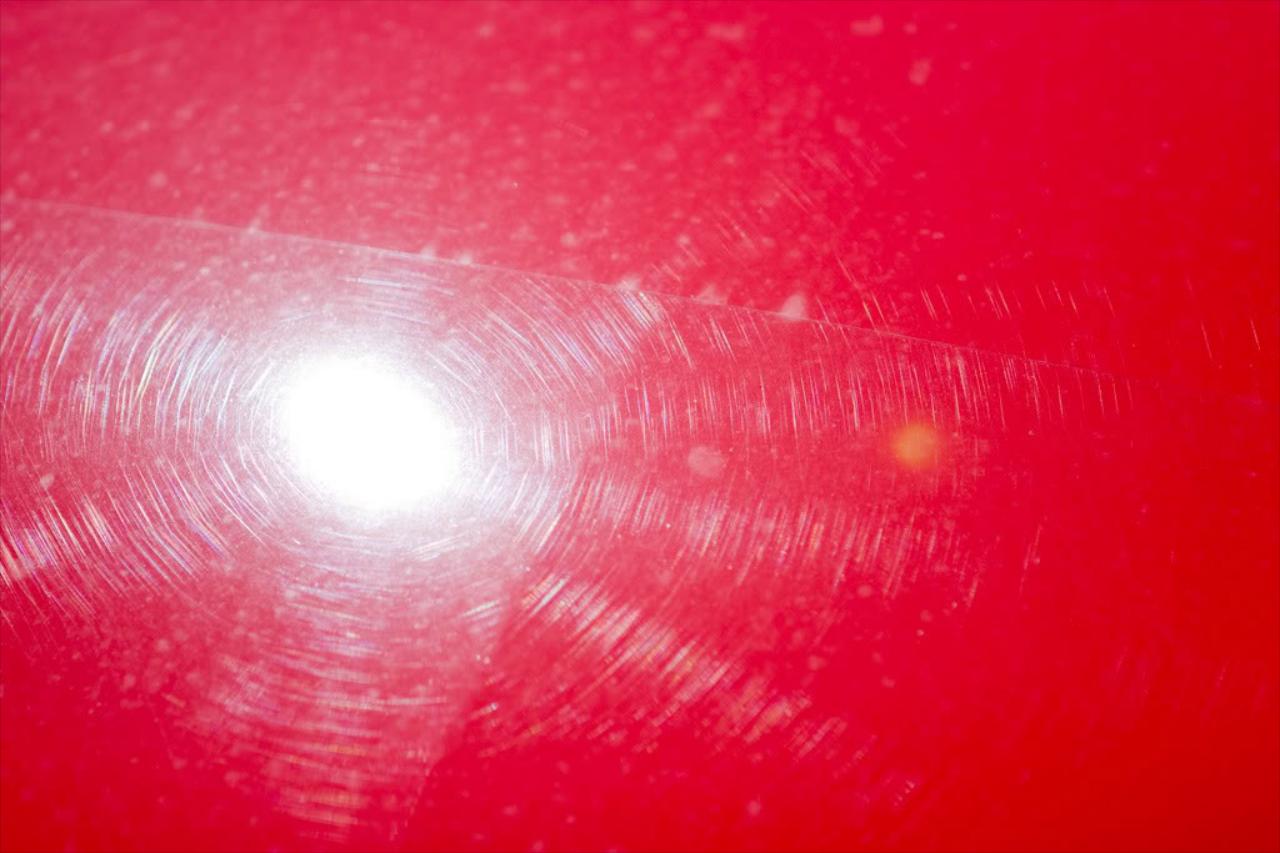Common Paint Defects
Little Intimidating, Isn't It?
Well that’s what I am here for! I am going to break down each one of these common paint defects without trying to go TOO nerdy on you.
SWIRLS
As the picture shows, the most common way to get swirls is improper wash technique but what exactly is happening in your paint that causes these? And what else can cause them?
In this example, the car would be a red color which you can see in the base coat. The base coat is the layer of paint that gives the car its color and above that is the clear coat which protects the base coat from harmful UV rays and other environmental issues. But most automotive clear coats are soft and get fine little scratches in them called swirl marks. At first, these are not a problem, but if not taken care of after some time your car will start to look less shiny to you.
Light swirl marks can be taken out with what is commonly referred to as a ‘one step polish’ which is what we do in our Gold package. Please note- most detail shops and dealerships use either a glaze or heavy wax that fills in these swirls so it looks great when you pick it up but after a couple of washes it fades away and you are left with a car that looks just like it did before. We don’t believe in this. We believe that when it leaves our shop as long as you properly maintain the finish what you paid for will stay. Thus giving you more value for you money.

If the swirl marks are really severe it might need what we call a ‘two step polish’ to get rid of most of the swirl marks. This is a compound polish followed by a lighter polish.
Now, what else can cause swirl marks besides poor washing technique?
- Brush car washes
- Leaving salt and dirt on the surface for long periods of time
- Just simply driving
Yes, I am sorry to say, but unless you plan on garaging your car 24/7 and never driving it you will EVENTUALLY get swirl marks. The key is how severe they are and how deep.
This is also why ceramic coatings have become so popular. It creates an additional, harder, layer on top of your clear coat so that it takes the punishment.
SCRATCHES
This one doesn’t need much explanation and both graphs do a great job of explaining what they are and giving a visual reference to them. A good rule of thumb for these is if your fingernail can catch it, it’s to deep to try and take it out.
BUFFER MARKS
Now this one usually takes a well trained eye to spot but sometimes the defect is so terrible it stands out like a sore thumb. As the graph states these are usually caused by a heavy cut compound that has not been finished down properly. This can also happen when someone is using too high of a machine speed or too heavy pressure.
I like to use the example of using sandpaper on wood. If you only use 800 grit sandpaper the wood is left feeling very rough and not smooth at all. This is why you finish wood with higher grits to smooth down what the more coarse sandpaper left behind. The same applies with polishing and paint. When polishing you are slowly ‘sanding’ away layers of paint and when you use to aggressive of a polish it leaves the surface rough and needs to be followed up with a less aggressive polish.
WATER/ACID/BUG ETCHING
I added in the third one because these three are essentially doing the same thing to the paint surface. And every year I have to break the news to someone that because their paint is soft or because they have left bugs on the front end of their car for too long that it has now etched the paint.
So what exactly is going on here? What is water etching? What is bug etching? I will explain both because they are slightly different.
Water etching happens when it has rained out or when your sprinklers run on your car and then the car is left outside to dry in the sun. All water carries minerals in it and so when the water evaporates it leaves behind these minerals which are acidic. These acidic minerals then slowly eat away the paint leaving rings. This is VERY common on glass.
Bug etching happens when a bug impacts your paint and is left to sit. Bugs are quite acidic and when left on your paint slowly etch it away. Ever washed your car and scrub at the front end in frustration because it seems like you can’t get the bugs off? This is what is happening. The bug guts have ate away a small layer of paint that looks like the bug is still there but is in fact gone and has etched itself into your paint.
Acid spots are caused by using to strong of a chemical and not properly rinsing off the area or allowing it to dry. This is quite common on touchless or brush washes because of the very strong chemicals used.
So what can you do to prevent these? Again. This is another reason ceramic coatings have come about. While they can’t totally prevent water spots (nothing can) it creates a sacrificial barrier so it takes the hit and not your paint. It is also easier to remove water spots from coatings than it is paint as we can get much more aggressive with removal.
